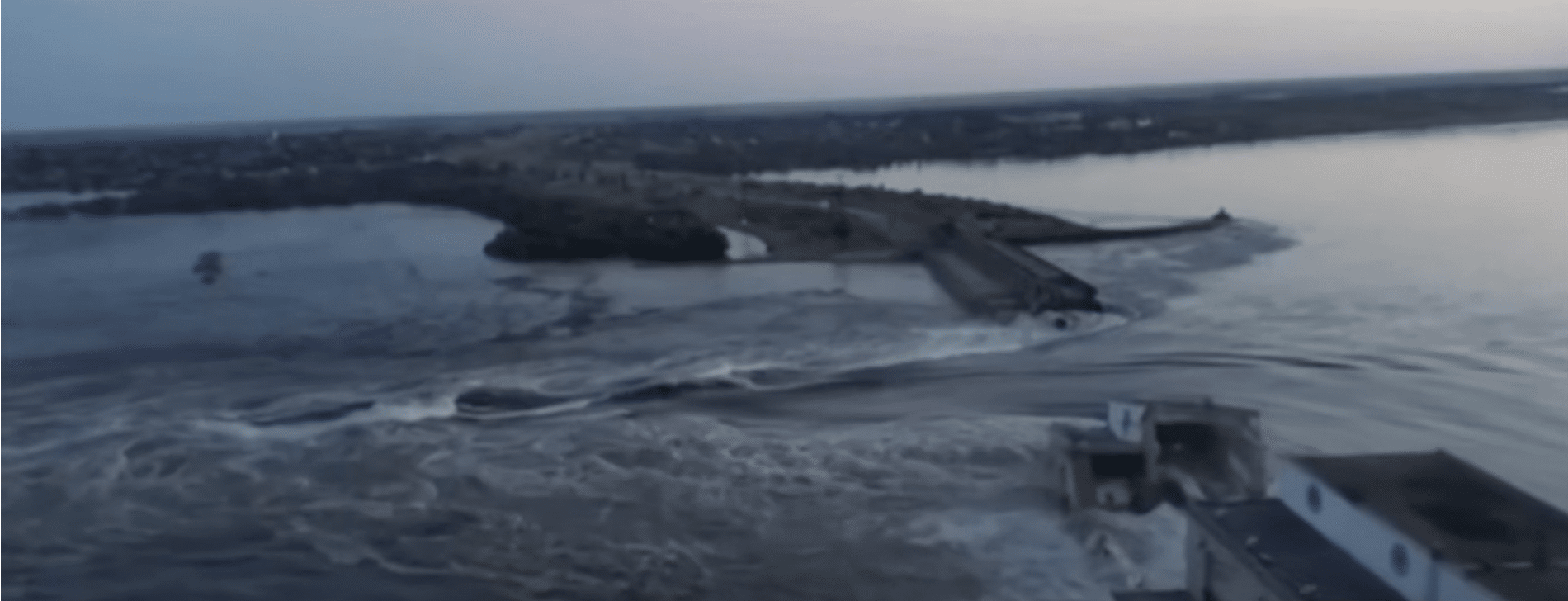The wall of a major dam in southern Ukraine collapsed Tuesday, triggering floods, endangering Europe’s largest nuclear power plant, and threatening drinking water supplies as both sides in the war scrambled to evacuate residents and blamed each other for the destruction.
According to the AP, Ukraine accused Russian forces of blowing up the Kakhovka dam and hydroelectric power station on the Dnieper River in an area that Moscow controls, while Russian officials blamed Ukrainian bombardment in the contested area. It was not possible to verify the claims.
The potentially far-reaching environmental and social consequences of the disaster quickly became clear as homes, streets and businesses flooded downstream and emergency crews began evacuations;
officials raced to check cooling systems at the Zaporizhzhia Nuclear Power Plant; and authorities expressed concern about supplies of drinking water to the south in Crimea, which Russia illegally annexed in 2014.
Both Russian and Ukrainian authorities brought in trains and buses for residents. About 22,000 people live in areas at risk of flooding in Russian-controlled areas, while 16,000 live in the most critical zone in Ukrainian-held territory, according to official tallies. Neither side reported any deaths or injuries.
The dam break added a stunning new dimension to Russia’s war in Ukraine, now in its 16th month. Ukrainian forces were widely seen to be moving forward with a long-anticipated counteroffensive in patches along more than 1,000 kilometers (621 miles) of front line in the east and south.
It was not immediately clear whether either side benefits from the damage to the dam, since both Russian-controlled and Ukrainian-held lands are at risk. The damage could also hinder Ukraine’s counteroffensive in the south and distract its government, while Russia depends on the dam to supply water to Crimea.
Although Kyiv officials claimed Russia blew up the dam to hinder the counteroffensive, observers note that crossing the broad Dnieper would be extremely challenging for the Ukrainian military. Other sectors of the front line are more likely avenues of attack, analysts say.
Even so, Nigel Gould-Davies, a senior fellow for Russia and Eurasia at the International Institute for Strategic Studies, said the alleged Russian destruction of the dam “betrays a lack of confidence, a lack of confidence, a profoundly defensive measure, the lack of confidence in Russia’s longer-term prospects” in the war.
Experts have previously said the dam was in disrepair, which could also have led to the breach. David Helms, a retired American scientist who has monitored the reservoir since the start of the war, said in an email that it wasn’t clear if the damage was deliberate or simple neglect from Russian forces occupying the facility. But Helms also noted a Russian history of attacking dams.


















